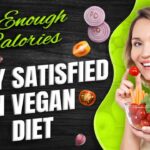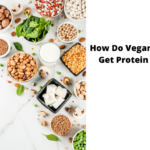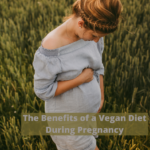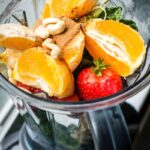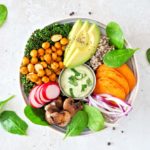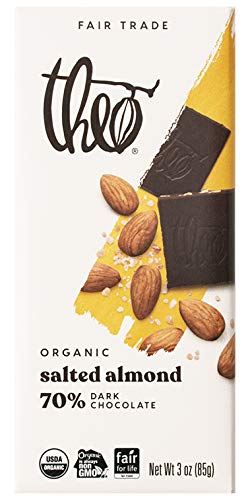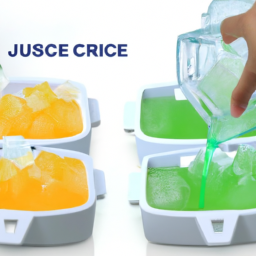Vegan
Vegan Nutrition – Sources of Protein, Calcium, Zinc, and Iodine
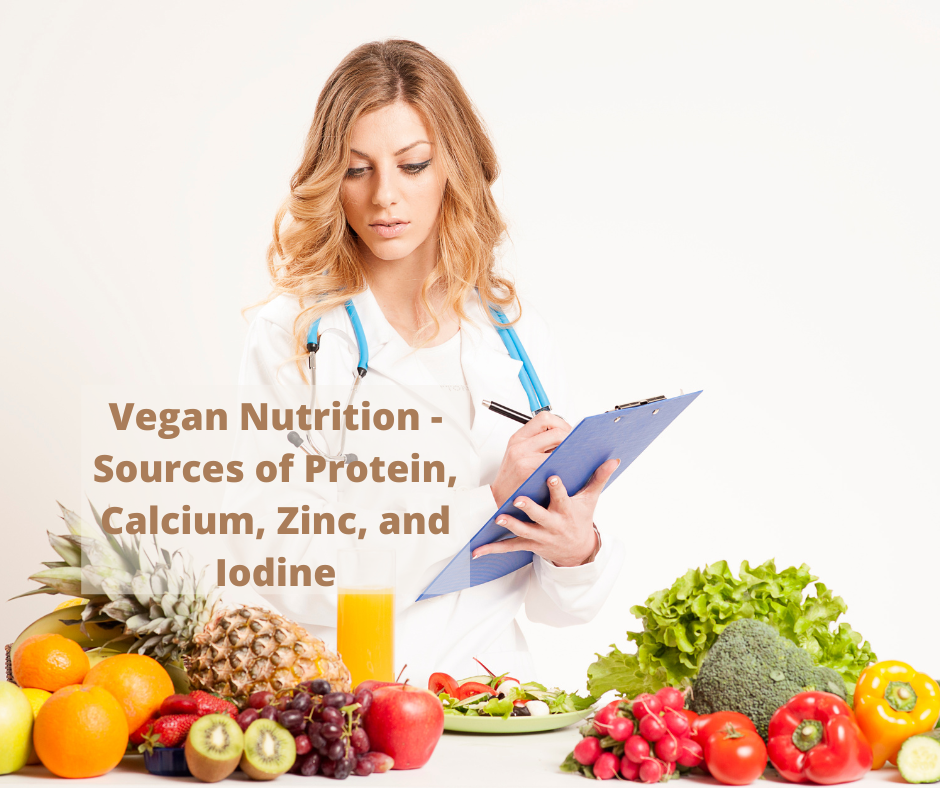
Nutritional requirements are essential for everyone, regardless of their dietary preferences, whether they include meat or not. As a vegan, I often get asked about where I get my protein from. Explaining that you can get all your nutritional needs met without consuming meat can sometimes be difficult. Yet, the truth is that there are numerous plant-based choices that provide all the vital nutrients the body needs.
Beans, lentils, tofu, and quinoa are just a few examples of vegan foods that can give you the protein you need. And nuts, seeds, fruits, and vegetables are all great sources of vitamins, minerals, and fiber. So next time someone asks you where you get your protein as a vegan, just tell them that you get it from plants!
Vegan Nutrition – Sources of Protein, Calcium, Zinc, and Iodine
What exactly is vegan nutrition? It is the nutritional and health aspects of a vegan diet. In short, a balanced vegan diet can meet all dietary recommendations for a healthy lifestyle. This article will examine the different sources of protein, calcium, zinc, and iodine in plant foods. Keeping all these nutrients in mind is vital for your overall well-being, so eating plenty of these foods is best.
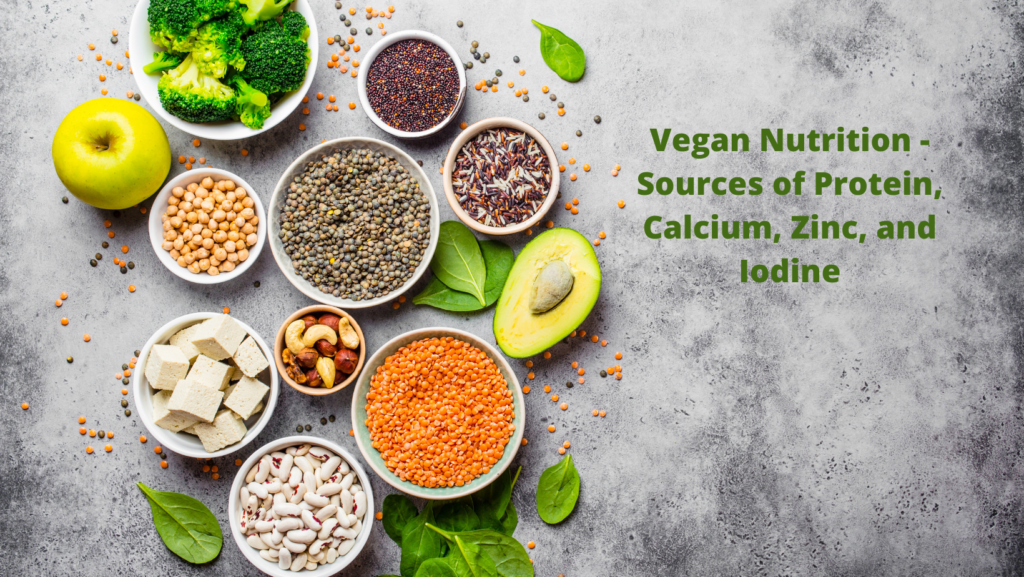
Sources of Protein
Vegans need to think about the best sources of protein. Soy, lentils, and peanut butter are good protein sources but don’t provide ample supply. Soy is high in fiber and protein, but they don’t fulfill your appetite for large amounts of protein.
Other vegan protein sources include tofu, quinoa, and quinoa-based products. Listed below are a few of the best sources of protein for vegans.
Legumes are a good source of protein.
Beans, lentils, quinoa, and peanuts are great plant-based protein sources. Soymilk and cheese are dairy-free, and soy products contain essential nutrients. Nuts are a good vegan protein source because they can be ground into almond flour, soaked to make dairy-free milk, and made into nut butter. Just make sure to check labels carefully.
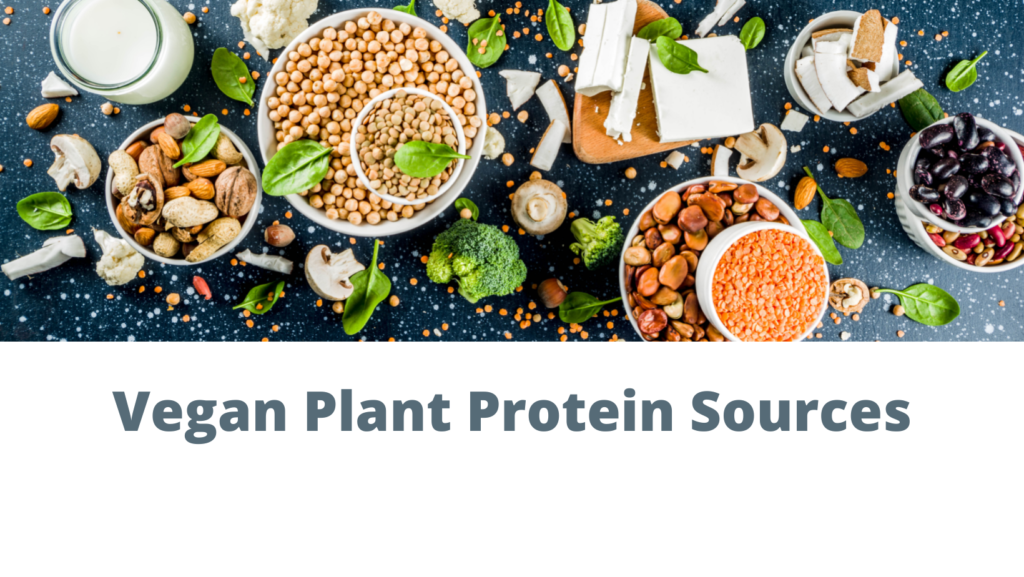
Sources of Calcium
Plant-based sources of calcium are abundant in tofu and other tofu alternatives. Soy milk and tofu contain a good amount of calcium and provide iron, magnesium, and selenium. For vegans, natto, made from fermented soybeans, maybe the best option. Natto is a traditional Japanese breakfast food that contains 206 mg of calcium per 200-calorie serving.
Legumes and beans are also excellent sources of calcium. They contain a significant amount of fiber, essential for a balanced diet. And, because they’re highly versatile, they’re a good source of calcium, ranging from 4% to 26% of your daily RDI. But beware – these sources don’t replace milk and cow’s milk, so they’re not an ideal substitute.
Sources of Zinc
If you’re looking for sources of zinc for vegan nutrition, consider lentils and whole-wheat bread. Lentils are a good source of zinc, and they have a lower fat content than most other grains. Just one cup of cooked lentils contains 1.3 mg of zinc, making them a healthy mineral source. You can also find it in other foods, like pumpkin seeds, lentils, and couscous.
Vegans and vegetarians need at least 50% more zinc in their diet than omnivores do. Studies have indicated that zinc levels in omnivores are higher than those in vegans, though their intake is significantly lower. However, the body can adjust by increasing its absorption and decreasing its excretion. So it’s imperative to include vegan sources of zinc in your diet. Ultimately, a well-balanced vegan diet is an excellent choice for anyone wishing to reduce their risk of chronic disease.
Sources of Iodine
Iodine is an essential mineral that helps your body create thyroid hormones, which control metabolism and maintain bone and brain growth. Many people don’t get enough iodine from their diet, and some studies even show that vegans aren’t absorbing as much as they need. In the West, we get most of our iodine from animal-based sources, such as milk. The fact that iodine in milk is not naturally present in this product makes it a difficult choice.
Despite the low iodine content in milk and seafood, many studies have shown that iodine intake is inversely correlated with UIC levels. Studies that examined vegans who didn’t supplement with iodine produced similar results. However, it’s still important to get adequate iodine from animal sources, even if they don’t meet the United States dietary recommendations.
Sources of Vitamin D
Aside from fortified cereals, some of the best vegetarian sources of vitamin D include tofu and soy chunks. Although tofu may be a new ingredient for you, Indians have long eaten this ingredient. Some breakfast cereals are also fortified with different vitamins, so read the label to ensure you’re getting enough vitamin D. Other sources to include mushrooms, a favorite of kids and non-vegans.
Although most animal-based vitamin D sources are unsuitable for vegans, mushrooms contain moderate nutrients. Mushrooms are naturally rich in vitamin D and are fortified with extra vitamin D after exposure to ultraviolet light. For vegans, it’s important to remember that vitamin D is a fat-soluble vitamin, which means it needs a source of fat to be absorbed by your body. Avocado, olive oil, nuts, and other fat seeds will do the trick.
In addition to these vegan sources of vitamin D, remember to get regular sun exposure. Just 10-15 minutes a day is enough to get your daily vitamin D. And if you can’t get outside, try a vitamin D supplement.
Vitamin B12
Vitamin B12 helps your body make red blood cells and keep your nervous system functioning properly. This vitamin is found naturally in animal foods, but it can also be produced synthetically and added to vegan foods. The best sources of B12 for vegans are fortified foods like cereals, non-dairy milk, and meat substitutes. You can also take a daily supplement or get injections from your doctor.
Although vegan sources of B12 are available, it’s important to remember that this vitamin is best absorbed from animal foods. So if you’re not getting enough B12 from fortified foods or supplements, you may need to consider eating animal-based products or taking regular injections.
Healthy Vegan Fat Sources
Healthy vegan fat sources include avocado, olive oil, nuts, and seeds. These foods are rich in monounsaturated and polyunsaturated fats, improving heart health and reducing the risk of chronic diseases. In addition to these healthy fats, vegans should also eat plenty of omega-3 fatty acids. These fats are found in flaxseeds, chia seeds, and walnuts. They can also be found in algae-based supplements.
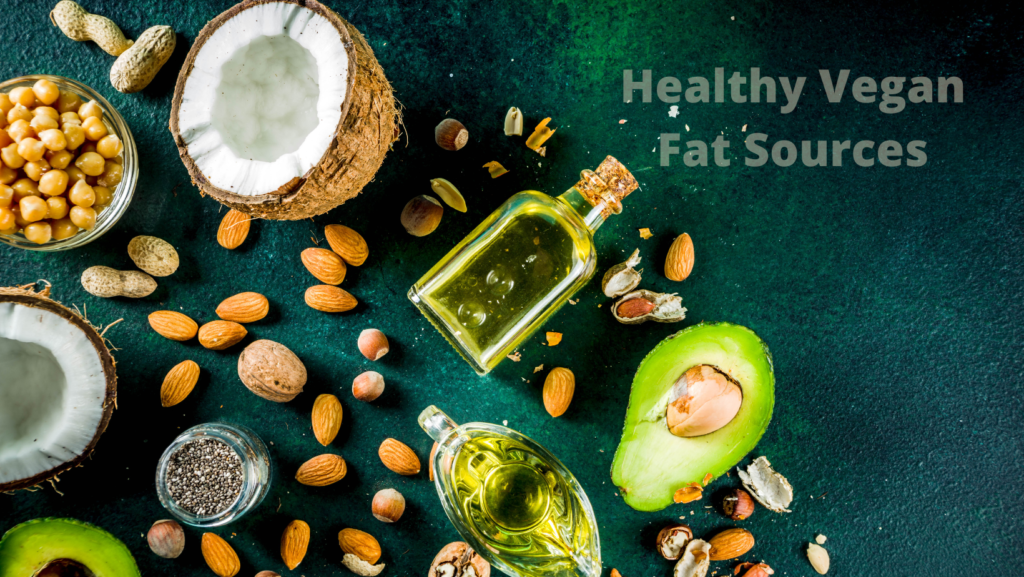
While omega-3 fatty acids are essential for good health, they are not as easy to find in vegan foods. This is why many vegans take a daily supplement or eat fortified foods. If you don’t get enough omega-3 fatty acids from your diet, you may experience dry skin, fatigue, and mood swings. You may also be at a higher risk for heart disease and other chronic diseases.
Conclusion
A well-balanced vegan diet can provide all the necessary nutrients, including protein, calcium, zinc, and iodine. However, some nutrients may be harder on a vegan diet. For example, vegans must ensure they get enough zinc and iodine in their diet. They can do this by eating fortified foods and supplements or getting regular sun exposure.
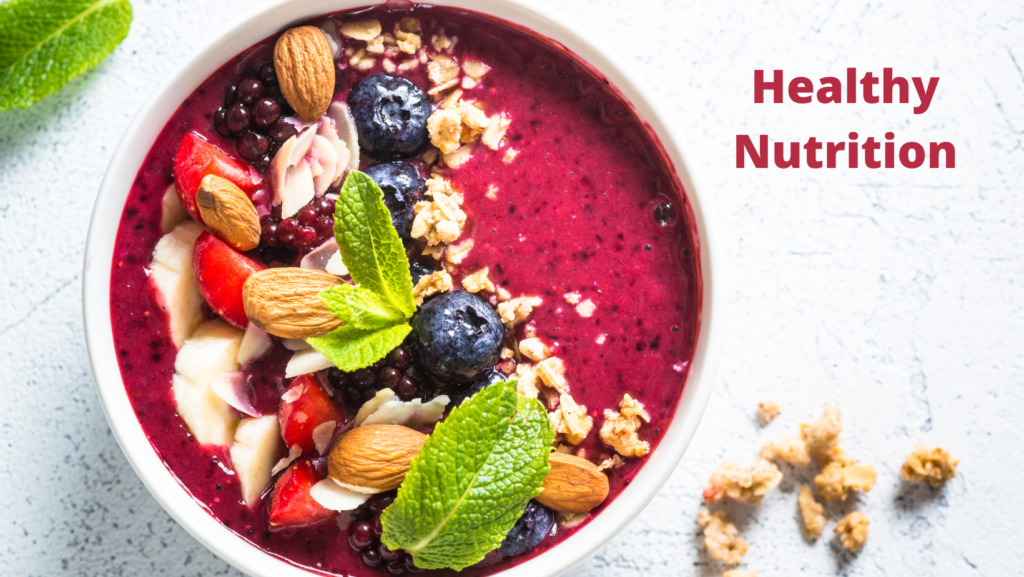
Vitamin B12 is another nutrient that is difficult to get from vegan sources. Vegans can get B12 from fortified foods or supplements, but it’s best absorbed from animal products. So if you’re not getting enough B12 from your diet, you may need to consider eating animal-based products or taking regular injections.
Ilana has been a vegan for over 10 years. She originally made the switch for health reasons, but soon found herself becoming more and more passionate about the ethical and environmental implications of a vegan lifestyle. Ilana is the author of The Graceful Kitchen, a blog all about veganism. She loves to cook up delicious and nutritious vegan meals, and share her recipes with others who are interested in leading a cruelty-free life. Ilana is also a strong advocate for using whole foods as the foundation of a healthy diet, and believes that going vegan is one of the best ways to achieve this.
Vegan
Tips For a Vegan PCOS Diet

Here are the basics of a vegan PCOS diet. It is important to consider a few factors when choosing a vegan diet. Remember that protein is often derived from animal products. If you are not getting enough protein from plant-based sources, it is recommended to take supplements. Other important things to keep in mind are to make sure you are consuming enough protein and healthy fats, maintaining a healthy weight, and regulating androgen levels.
Getting enough protein
If you have PCOS, it is crucial to get enough protein in your diet to support the disease. A vegan diet can help reduce the body’s production androgens. This can lead to hair loss, acne, and other symptoms. It can also protect you against other conditions associated with PCOS such as type 2 diabetes or heart disease. There are many things to consider when you decide to eat vegan.
A study published in 2017 found that a diet rich in omega-3s and fiber is beneficial for people with PCOS. Vegans can easily meet these guidelines by including these fats regularly in their diets or supplementing them. They must ensure they get enough protein to maintain their weight.
Plant-based protein sources can be found in many places and are a good source for fiber and B vitamins. For example, kidney beans are an excellent source of protein, with 13.4 grams per cup. Peas, black beans, pinto beans, navy beans, and peanuts are also high in protein.
The average American consumes far more protein than they need. This is because animal-based protein are less efficient and more costly than plant-based proteins. The average UK person consumes 64 grams of protein per day, which is sufficient. It is important to not exceed the recommended daily intake as it can cause side effects.
Many vegetarians and vegans eat more protein than they should. They consume way more than recommended amounts of fibre and micronutrients. There are some foods that are not suitable for vegans with PCOS. Soy is one example. It has very few health benefits and it’s not very tasty.
Getting enough good fats
Eating a diet low in carbohydrates and high in good fats can help people with PCOS. This diet is recommended for people with the disorder, according to a 2017 study. This diet should be low in saturated fat and high in omega-3 fatty acids. It should also include foods rich in fiber. Vegans can follow these guidelines by including omega-3 in their diet regularly and taking supplements containing these fatty acids.
People with PCOS can benefit from a vegan diet. This is because it reduces the production of excess androgens which are the main cause of their symptoms. In addition, a vegan diet may protect the body against conditions related to PCOS, including heart disease and type 2 diabetes. While a vegan diet can be confusing, it is important to understand the benefits of a vegan diet.
Managing weight
The latest research suggests that a vegan diet can be beneficial for PCOS patients. This dietary plan includes low levels of saturated fats and high fiber, as well as plenty of omega-3s. Vegans can meet these guidelines by regularly including these omegas in their diet or taking supplements.
This is because it helps regulate insulin levels, which is crucial for controlling blood sugar. While this diet may not be suitable for women who are overweight or obese, it can help them lose weight while improving their condition. This diet has been shown to improve blood sugar control and reduce insulin resistance, making it an option for women with PCOS.
Another benefit of a vegan diet is that it reduces cholesterol and inflammation. High levels of cholesterol are closely linked to PCOS. A vegan diet is rich in essential nutrients and fiber, which can help lower LDL cholesterol levels and improve symptoms. It can also improve gut flora and balance hormones.
Managing androgens
It is important to manage androgens in vegan PCOS sufferers. Although excessive androgen levels can lead to a host of problems, they can also help normalize other hormone levels. Excessive androgens can cause irregular menstrual cycles and excess facial hair.
PCOS symptoms can be reduced by making lifestyle changes. One way to do this is to reduce grains and processed foods. This will allow the body to respond to insulin more efficiently, which lowers androgens. Another way to help regulate testosterone levels is by increasing foods rich in natural anti-androgens.
Soy contains phytoestrogens and isoflavones, which help to control androgen levels. Soy, found in soya products, significantly reduces testosterone levels. However, it’s important to purchase soy products from a traditional Korean store as soy contains harmful chemicals and should be avoided.
Hi, I’m Alexander. I’m a vegan of over 20 years, and I initially made the switch for health reasons. However, as time went on, I became more and more passionate about the ethical and environmental implications of leading a vegan lifestyle.
I am the author of The Graceful Kitchen, a vegan blog where I share recipes for delicious and nutritious vegan meals. As someone who is deeply committed to living a cruelty-free life, I am also a strong advocate for using whole foods as the foundation of a healthy diet – and believe that going vegan is one of the best ways to achieve this.
Vegan
Veganism and Hair Loss

Many people are concerned about the link between a vegan diet and hair thinning. However, research on this topic has not yielded definitive answers. While a study suggested that vegetarians may have less robust hair compared to meat-eaters, the results were not statistically significant. A dermatologist specializing in hair thinning reassured that this connection should not be a cause for worry. According to Zeichner, there is no evidence to suggest that dietary restrictions lead to hair loss.
Storage Iron Levels Are Reduced
Iron is a mineral that plays an essential role in the growth of hair. Iron helps red blood cells to form hemoglobin which carries oxygen to hair follicles. However, vegans and vegetarians have lower iron stores, making it imperative that they eat foods high in iron.
Iron deficiency is a common problem for both men and women, especially after menopause. Iron deficiency can increase the risk of hair loss in some people. Blood tests are the best way to determine if you have iron deficiency. Your doctor can determine if you have iron deficiency by checking your hemoglobin and hemocrit levels. Fortunately, iron deficiency is largely treatable.
Vitamin B12 Deficiency
Vitamin B12, also known as cobalamin, can be found in the body and is essential for many nutrient processes. It aids in processes like DNA replication and cellular metabolism. It is also needed for red blood cell formation. A deficiency of this vitamin can lead to a wide range of symptoms, including hair loss. To prevent hair loss, it is important to consume the recommended daily amount of vitamin B12.
Hair loss may also be a sign of an iron deficiency. Vitamin B12 is important for the health of nerve cells, as it plays an important role in cell formation. The human body cannot produce vitamin B12, so it must get it from animal sources. Luckily, some breakfast cereals are fortified with this vitamin. Those who follow a strict vegan diet are more likely to suffer from a vitamin B12 deficiency than other people.
Vegans who are concerned about hair loss may want to consider adding more vitamin B12 to their diet. Soy products are a good source of vitamin B12, as they contain large amounts of the vitamin. However, vegans should note that there are no significant amounts of this vitamin in oily fish and meat. Fortified soya milk is one way to supplement your diet with this nutrient.
Changing your diet to a vegan one does not cause permanent hair loss. This can be prevented by eating a varied diet rich in nutrients. A well-balanced vegan diet is more important than any supplement or food plan.
Vitamin B12 is a vital vitamin that the body requires to function properly. A vitamin B12 deficiency can affect anyone. The symptoms of a deficiency may take many years before they become obvious. It is possible to overcome a deficiency if you are aware of what foods to eat and how much. It is possible for vegetarians and vegans to be deficient in vitamin B12 but this is rare.
Iron Deficiency Anemia
Vegans may be concerned about iron levels because they haven’t eaten enough animal products. This can lead to anaemia. Vegans can still eat foods rich in iron or vitamin B12. These foods are high in iron and antioxidants. These foods can be eaten to help vegans fight anemia.
Iron is abundant in dark green leafy vegetables. In fact, a hundred grams of spinach contain more iron than a hundred grams of red meat or chicken. These vegetables can be added to salads, smoothies, and soups, or even cooked in curries. Other vegetables rich in iron include broccoli and Brussels sprouts.
Women of reproductive age are at risk for iron deficiency and anemia. This condition is more common in women who eat vegetarian and vegan diets. This is partly due to the caloric restrictions that vegans and vegetarians eat.
While studies have shown that vegans are not at higher risk of developing iron deficiency anemia than the general population, some studies indicate that vegans may have lower levels of iron. Choosing the right food sources, however, is important for preventing anemia. Vegans can take iron supplements in addition to eating iron-rich plant foods. These iron supplements are often prescribed for anemia patients.
A well-balanced vegan diet can be beneficial for iron deficiency, as long as it includes foods rich in vitamin C. Vitamin C boosts the absorption of iron by up to five times. Vitamin B12 and vitamin B6 also boost iron bioavailability.
While most vegetarians and vegans have sufficient iron, pregnant women may be at greater risk of anemia. They have higher iron needs during this period due to their menstruation. For this reason, it is recommended that female vegans and vegetarians be monitored closely for iron deficiency anemia.
Iron deficiency is a condition that can cause fatigue and lightheadedness. It can also cause heart problems and can affect pregnancy.
Reduced Soy Intake
Soy is one of the most nutritious foods available. Soy is high in protein, which is essential for healthy hair. However, some studies have shown that soy may exacerbate hair loss and other conditions, so reducing your soy intake may be helpful for you. Soy is the general term for any product made from soybeans, the seeds of the Glycine max plant. It was first developed in China, and has since been widely spread around the globe.
Soy isoflavones are estrogenic and goitrogenic, so it can be beneficial to limit your soy intake. It can also cause hair loss by affecting your thyroid. While soy is present in a limited quantity in the Japanese diet, it is ubiquitous in the United States. Soy milk, soy hotdogs, and many other soy products have replaced red beef in American diets. Although the effects may be minimal, the hormones in soy can affect the health of your hair and the health of your thyroid gland.
Research shows that soy isoflavones may alter the metabolism of testosterone in men. They also inhibit the 5-alpha-reductase enzyme that converts testosterone into dihydrotestosterone. This disruption disrupts the normal cycle of hair growth. There is no evidence to suggest that soy can help you grow hair.
Soy may help prevent hair loss. It is also healthier and cheaper than surgery and prescription drugs. Most people in North America, Western Europe and Asia do not allow soy products to be consumed. Despite this, supermarket shelves are stocked with soy-based foods as well as commercial products. Studies show that 79% of edible fats in the body are from soy.
Although soy may not prevent hair loss, it is an important part to a healthy diet that can provide nutrients for your entire system. Soy is a healthy option for both men and women. Soy is a good source of protein and can be an important part of your diet.
Hi, I’m Alexander. I’m a vegan of over 20 years, and I initially made the switch for health reasons. However, as time went on, I became more and more passionate about the ethical and environmental implications of leading a vegan lifestyle.
I am the author of The Graceful Kitchen, a vegan blog where I share recipes for delicious and nutritious vegan meals. As someone who is deeply committed to living a cruelty-free life, I am also a strong advocate for using whole foods as the foundation of a healthy diet – and believe that going vegan is one of the best ways to achieve this.
Vegan
Vegan Lindt Chocolate
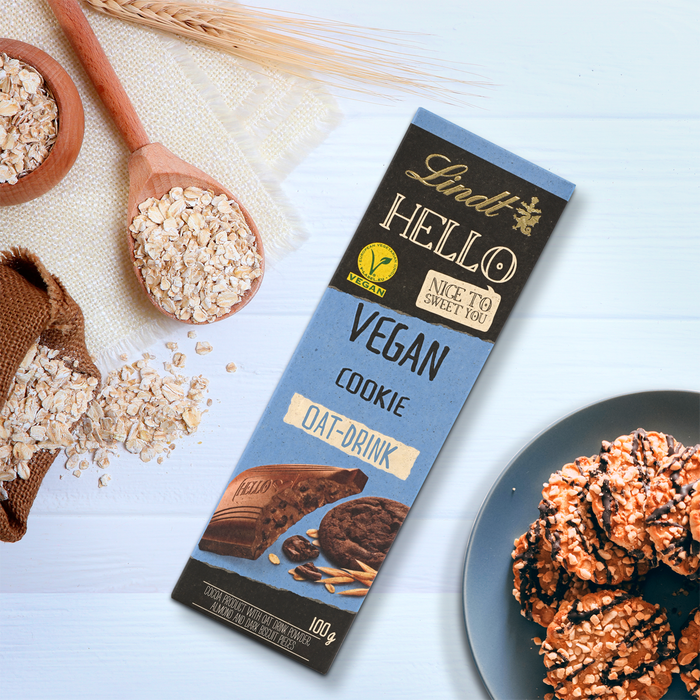
Lindt’s vegan chocolate is a great option for chocolate lovers who prefer to avoid animal ingredients. It contains 48% cocoa, along with anhydrous milk fat, chili pepper extract, flavorings, sugar, and vanilla beans. The chocolate also includes soy lecithin as a natural emulsifier.
Ingredients in Vegan Lindt Chocolate
Many chocolate lovers may not be aware of the ingredients in vegan Lindt chocolate bars. These chocolate bars are made without dairy milk and are considered one of the best vegan options available. They are delicious and have a milky flavor, making them ideal for people who are trying to reduce their dairy intake. Fortunately, most major chocolate companies are now creating vegan alternatives.
Lindt has released a vegan version of their HELLO bar, an indulgent plant-based alternative to their classic whole milk chocolate. This new chocolate bar is made with a dairy-free base and has crunchy cookie pieces. It contains sugar, cocoa butter and oat syrup (15%) as well as natural flavors, raising agents, soy, and soy.
Lindt has taken great care to ensure that their cocoa beans come from ethical sources. The program allows them trace the beans that were used to make their chocolate. They can also track where their sugar comes from with this program. You should know that white sugar in North America comes from bone char and is not vegan.
There are also vegan versions of Excellence Caramel and Sea Salt. Unfortunately, they contain milk fat, soya lecithin, and sugar. Cocoa butter is considered vegan. Lindt could make Excellence Orange Intense Dark Chocolate vegan with a few simple changes to the chocolate’s flavor and additions of soya lecithin.
Lindt bars contain a lot of chocolate, mostly cocoa, sugar and cocoa butter. It also contains milkfat and vanilla. A higher cocoa percentage indicates it is less sweet. However, it may contain traces of milk due to cross-contamination. It is therefore not recommended for vegans.
Lindt chocolate is not recommended for people with allergies or sensitivities to dairy products. The company’s website provides more information about its products. The Excellence Lime Intense Dark Chocolate Bar contains milk fat. It also contains a low percentage of cocoa solids. It is important that you read labels.
While many vegan brands have successfully achieved a melting texture with their plant-based chocolate bars, Lindt plant-based chocolate bars have some shortcomings. The chocolate can lack a rich flavor and the caramel’s sweetness can sometimes overwhelm it. Lindt could experiment with new flavour combinations to overcome this problem. Salted caramel, for instance, is an increasingly popular taste profile. Salted caramel balances the sweetness of caramel and lends the chocolate a silkier consistency.
Flavors of Vegan Lindt Chocolate Bars
Lindt’s new vegan milk chocolate bars are made with oat milk, not dairy milk. These chocolates can be found in several flavors in the UK and Canada. The company has partnered with the Sainsbury’s grocery chain in the United Kingdom to make them available. This means that more people can enjoy Lindt’s delicious chocolates without the worry of dairy milk.
The vegan chocolate bar will be available in January 2022, just in-time for Veganuary, a month dedicated to healthy eating. However, the new bars will only be available in the United Kingdom. Although the company has made other attempts to create plant-based confections over the years, this is the first time they have made them available to the public. Lindt introduced plant-based milk chocolate products in 2016. The vegan milk chocolate bars were made with almond paste and oat milk powder.
Lindt has made a great deal of effort to source its ingredients ethically. The company has implemented a traceability system for sugar and beans. This allows consumers to trace the origin of their chocolate and avoid using bone char. It is important to keep in mind that many refined sugars are non-vegan.
It is not easy to find vegan chocolates as good as Lindt’s. However, there are some things you should keep in mind. For one thing, vegan chocolate bars are usually not as smooth as other types. This can cause people to feel uncomfortable about eating them. Lindt should look into creating vegan chocolate that is more appealing to all types of chocolate lovers.
Vegan chocolate is available in the UK, Canada, and the USA for two years. However, until recently it was difficult for Americans to find dairy-free options. The company has expanded its reach by introducing Lindt Classic Recipe OatMilk to all 50 states. This vegan chocolate bar is made with gluten-free oatmilk powder. This vegan bar comes in two flavors: Smooth or Hazelnut.
Lindt uses a lot cocoa in its dark chocolate bars. Dark chocolate bars made from 85% cocoa are more likely to be vegan than bars made with less cocoa. However, some chocolates contain traces of milk due to cross-contamination. There are also other ingredients that aren’t vegan.
Vegan Lindt Chocolate Is Available
Lindt is a well-known name in the silky-smooth chocolate business. This Swiss confectionary brand has been producing high-quality confections since 1845. Unfortunately, the company’s recipes are so high in butter and milk that vegans can’t enjoy them. But, thanks to recent developments, vegans can now enjoy Lindt chocolate.
As part of its Hello line, Lindt has released vegan milk chocolate bars. These vegan-friendly bars are available in Germany, Canada, the United Kingdom and other countries. They contain oat milk rather than dairy milk. They can be found in select Lindt chocolate shops, grocery shops, and other locations. They can be found in the UK at the well-known grocery chain Sainsbury’s. You should check the ingredients list to make sure that not all Lindt chocolates can be made vegan-friendly.
Vegans should be aware that some Lindt dark chocolate may contain milk or other dairy products. Vegans prefer chocolates that have fewer ingredients. As a rule, the simpler the list of ingredients, the better. Although Lindt dark chocolate bunnies can be made gluten-free, some of their dark chocolate truffles may contain dairy.
While Lindt’s new vegan chocolate bars are not entirely vegan, they are certainly healthier than their traditional counterparts. The vegan versions are made with almond paste and gluten-free oatmilk. They are great for those times when you don’t want dairy milk but still want to enjoy chocolate. These bars can be found at Sainsbury’s as well as other major grocery stores across the country.
Vegan Lindt chocolate bars are made with sugar and cocoa butter, which is not the case for dairy-based chocolates. They also contain small amounts anhydrous milk fat and emulsifiers. In addition to these ingredients, they may contain artificial flavoring and colorings. Many vegans love dark chocolates, but they are happy to eat them as is.
One problem with Lindt plant-based chocolate bars, is their lack of melting texture. However, many other vegan chocolate brands have overcome this issue. Another problem with vegan chocolate is that the vanilla flavour can sometimes overshadow the chocolate. This could be corrected by creating new flavours. A salted caramel flavour, for example, has been popular for years. It balances the sweetness of caramel and lends a silkier consistency.
The vegan food movement has led to a dramatic expansion of the vegan chocolate market. As a way of satisfying vegan consumers’ needs, more companies are offering vegan options. The market for vegan chocolate is expected to reach $1.5 billion by 2028 and grow at 14.8% CAGR. Many established chocolatiers are also redesigning their signature recipes in an effort to cater to the growing demand for vegan chocolate.
Hi, I’m Alexander. I’m a vegan of over 20 years, and I initially made the switch for health reasons. However, as time went on, I became more and more passionate about the ethical and environmental implications of leading a vegan lifestyle.
I am the author of The Graceful Kitchen, a vegan blog where I share recipes for delicious and nutritious vegan meals. As someone who is deeply committed to living a cruelty-free life, I am also a strong advocate for using whole foods as the foundation of a healthy diet – and believe that going vegan is one of the best ways to achieve this.
-

 Vegan3 months ago
Vegan3 months agoIs Weetabix Healthy? 14 Things You Should Know
-

 Raw1 month ago
Raw1 month agoWhy Do Raw Beets Irritate My Throat?
-

 Beginners Guides1 month ago
Beginners Guides1 month agoIf Beets Are Soft Are They Bad?
-

 Vegan3 months ago
Vegan3 months agoIs Gatorade Zero Healthy? 33 Things You Should Know
-

 Juice23 hours ago
Juice23 hours agoHow To Fix Too Much Lemon Juice In Soup
-

 Raw4 weeks ago
Raw4 weeks agoMacadamia Nuts – Which is Better Nutrition Raw Or Dry Roasted?
-

 Juice3 months ago
Juice3 months agoHow To Make Dmt Vape Juice
-

 Vegan3 months ago
Vegan3 months agoHow to Tell If Your Eggplant is Going Bad by Looking at the Color on the Inside





